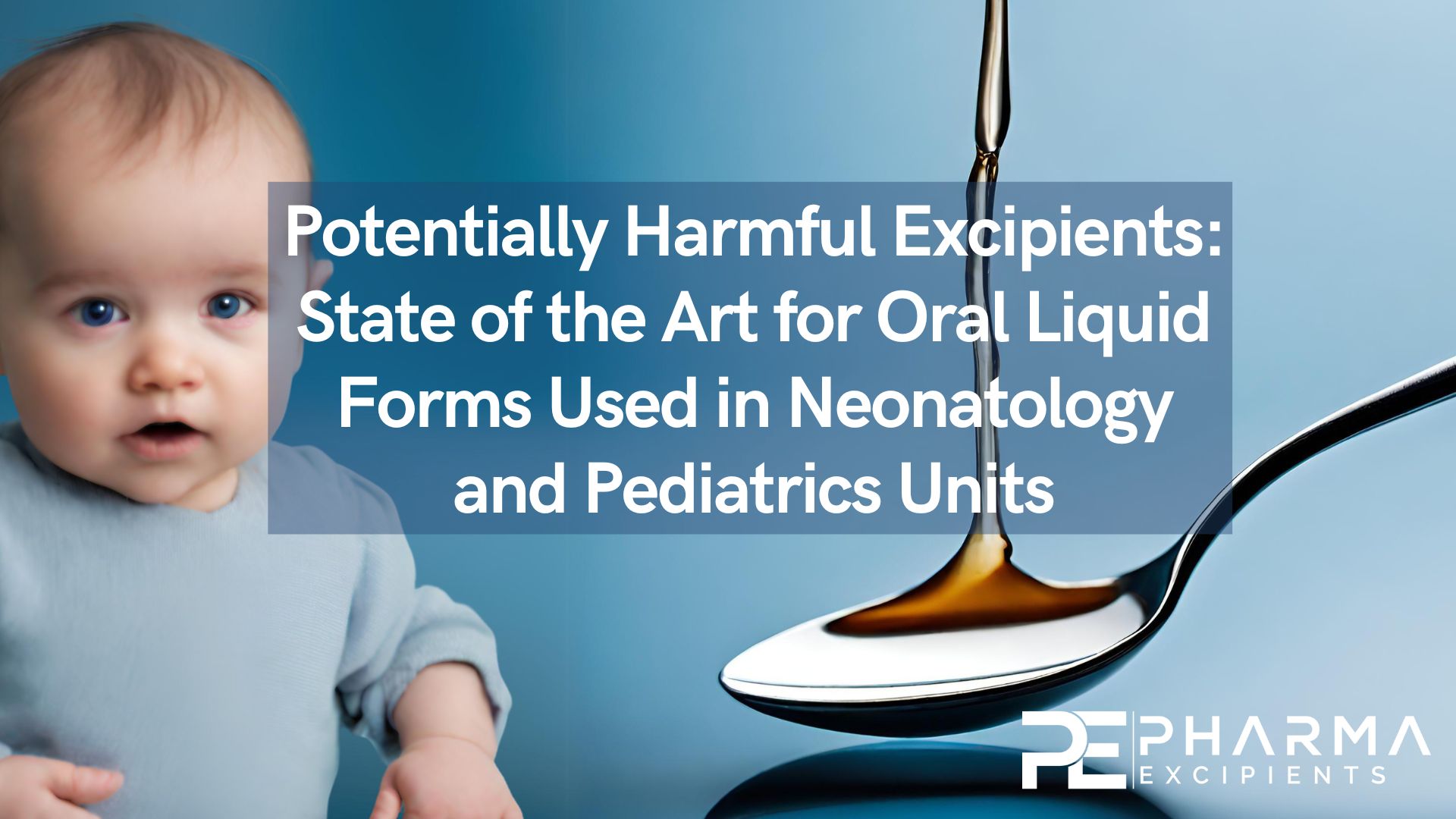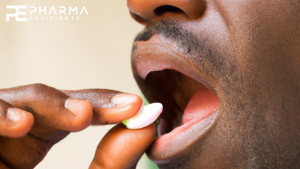Potentially Harmful Excipients: State of the Art for Oral Liquid Forms Used in Neonatology and Pediatrics Units

Abstract
The pediatric population exhibits an important age-dependent heterogeneity in pharmacokinetics and pharmacodynamics parameters, resulting in differences in drug efficacy and toxicity compared to the adult population, particularly for neonates. Toxicity and efficacy divergences have been studied for active molecules, but the impact on the pharmacological parameters of excipients remains less well known. To fill this lack of knowledge, several initiatives have been started to gather information on the specific toxicity of excipients, such as the KIDS list or the STEP database. In order to contribute to this much-needed action, in this work, a compilation of the 219 formulations of oral liquid forms prescribed in pediatrics and neonatology units was established based on the summary of product characteristics. Then, for excipients found in more than 10% of the analyzed formulations, a review of their toxicity data was carried out using the STEP database. Finally, for a selection of 10 frequently used liquid forms, the amounts of excipients administered daily were calculated based on the recommended posology in the Summary of Product Characteristics (SPC) and compared with the recommended daily limits proposed by the European Medicine Agency. Pediatrics-adapted formulations are still rare, and it is not always possible to find safe alternatives to drugs containing excipients of interest.
Introduction
The pediatric population, which includes children from birth to 18 years of age, is very heterogeneous and experiences during its development a large variability of pharmacokinetic and pharmacodynamics parameters. This results in differences in drug efficacy and toxicity not only compared to adults but also within the pediatric population [1,2,3]. This pharmacokinetic variability occurs at every step of the drug path, i.e., absorption, distribution in the organism, metabolism and elimination, for example due to hepatic and renal function immaturity at birth [2,4].
The pharmacodynamics parameters of drugs are also age-impacted; for example, specific drug receptors are expressed differently in newborns and children than in adults, and this expression varies during a child’s development. This results in differences in the concentration of drugs in the blood but also in their specific active site, which influences their pharmacodynamic effect with potentially lower efficacy or increased toxicity. This variability is particularly observed in neonates and especially in preterm newborns, making it necessary to adapt the posology of active substances in this age group. It is important to note that while much information has been gathered on the impact of age variability on pharmacological parameters and the toxicity of active molecules, the safety profile of excipients remains less well known [3,5].
Excipients are components of drug formulations used for a wide range of applications, inter alia to improve the solubility, palatability or physicochemical stability of the active substance, but also to preserve it from microbiological contamination. Excipients are expected to be inactive; however, it has been observed that several of them are associated with toxicity, leading to the definition of excipient of interest (EOI) [6,7,8,9,10].
Excipients have been the subject of particular attention for many years, notably with the creation in 1991 of the International Pharmaceutical Excipients Council (IPEC), which in 1997 drew up guidelines for the pharmaceutical industry concerning the safety evaluation of excipients [6]. Nevertheless, data on the toxicity of excipients in the pediatric population are still scarce and often extrapolated from the adult population.
Several recent initiatives have been taken to study excipients and their possible toxicity in the pediatric population, including neonates, more specifically. The European Medicine Agency (EMA) has published a number of discussion papers and established guidelines for the labelling and package leaflet of medicinal product for EOI, concerning both adult and pediatric populations [7]. In addition, since 2001, a major European study on the toxicity of excipients in neonatology has been underway: the European Study of Neonatal Exposure to Excipients (ESNEE). A priority list of excipients considered toxic has been established, and further studies are in progress to measure the exposure of neonates to these excipients [8,9].
Also, based on specialized literature, censuses are progressively set up to identify the molecules of concern, such as the “KIDS list” (Key Potentially Inappropriate Drugs) published in 2020 (containing active substances as well as excipients) [10]. Another initiative specifically targeting excipients is the STEP Database (Safety and Toxicity of Excipients for Pediatrics), which is a database developed since 2012 gathering several studies analyzing the toxicity of excipients in children and newborns as well as in the adult population [11,12,13].
These findings have allowed the development of legislation concerning the formulation and use of pediatric and neonatology medication, with obligations to indicate the presence and quantity of EOI in drugs leaflets, and contraindications for certain excipients that have shown to be toxic in children. For instance, in 2011, the labeling of KALETRA oral solution (Lopinavir/Ritonavir) was changed because the amount of ethanol exceeded the tolerance threshold in neonatology, whereas it was previously authorized for neonates and children [14].
Yet, there is still a lack of drugs developed specifically for children, and then pediatric patients are often treated with off-label medications [15,16,17,18].
Table 1. Repartition of major excipients in the formulations investigated.
| Excipients | Formulations (%) Containing the Excipient | Functionality |
|---|---|---|
| Purified water | 110 (50%) | Solvent |
| Sodium saccharin | 80 (36.5%) | Sweetening agent |
| Citric acid | 79 (36%) | Buffering agent/preservative |
| Methyl parahydroxybenzoate (methylparaben) | 68 (31%) | Preservative |
| Saccharose | 60 (27%) | Sweetening agent |
| Sodium benzoate | 57 (26%) | Preservative |
| Propyl parahydroxybenzoate (propylparaben) | 56 (25%) | Preservative |
| Sodium citrate | 50 (23%) | Buffering agent |
| Xanthan gum | 47 (21%) | Viscosity increasing agent/emulsifying/suspending |
| Colloidal silicon dioxide | 43 (20%) | Viscosity increasing agent/emulsifying/suspending |
| Glycerol | 39 (18%) | Solvent/humectant |
| Propylene Glycol | 34 (15.5%) | Solvent/humectant |
| Sodium Hydroxide | 34 (15.5%) | Buffering agent |
| Sorbitol | 31 (14%) | Sweetening agent/viscosing agent |
| Aspartame | 30 (13.5%) | Sweetening agent |
| Ethanol | 29 (13%) | Solvent/preservative |
Regarding drug administration, the oral route is generally preferred when possible, as it is non-invasive. In particular, in pediatric and neonatal units, oral liquid forms are widely used, as solid forms are contraindicated before the age of 6 due to anatomical and neurological immaturity [13]. In addition, oral liquid forms (i.e., syrups, suspensions and ready-to-use solutions or reconstitutable powder or granules) offer advantages for the pediatric population, as they enable the dose administered to be adjusted (with weight-adapted syringes or spoons) during the child’s growth. However, oral liquid forms present an increased risk of misuse with errors in sampling the volume to administer or a risk of confusion between the prescribed dose and the volume [19,20,21]. Furthermore, their formulation can be complex, requiring the addition of various excipients to enable processing, to improve their physicochemical stability or to prevent a microbiological contamination. In particular, ready-to-use forms frequently contain preservatives, some of which are known to induce toxicity.
This study therefore involved investigating the qualitative and quantitative composition of a wide panel of pediatric liquid oral medications in order to identify the most common excipients found in these formulations. Then, considering the toxicity data and recommended daily limits available for these excipients, a screening was carried out to assess whether the excipient compositions of the pediatric liquid oral forms investigated were suitable for this population.
Download the full article as PDF here: Potentially Harmful Excipients
or read it here
Bobillot, M.; Delannoy, V.; Trouillard, A.; Kinowski, J.M.; Sanchez-Ballester, N.M.; Soulairol, I. Potentially Harmful Excipients: State of the Art for Oral Liquid Forms Used in Neonatology and Pediatrics Units. Pharmaceutics 2024, 16, 119. https://doi.org/10.3390/pharmaceutics16010119
Read more on Orally Disintegrating Tablets (ODTs) here:


